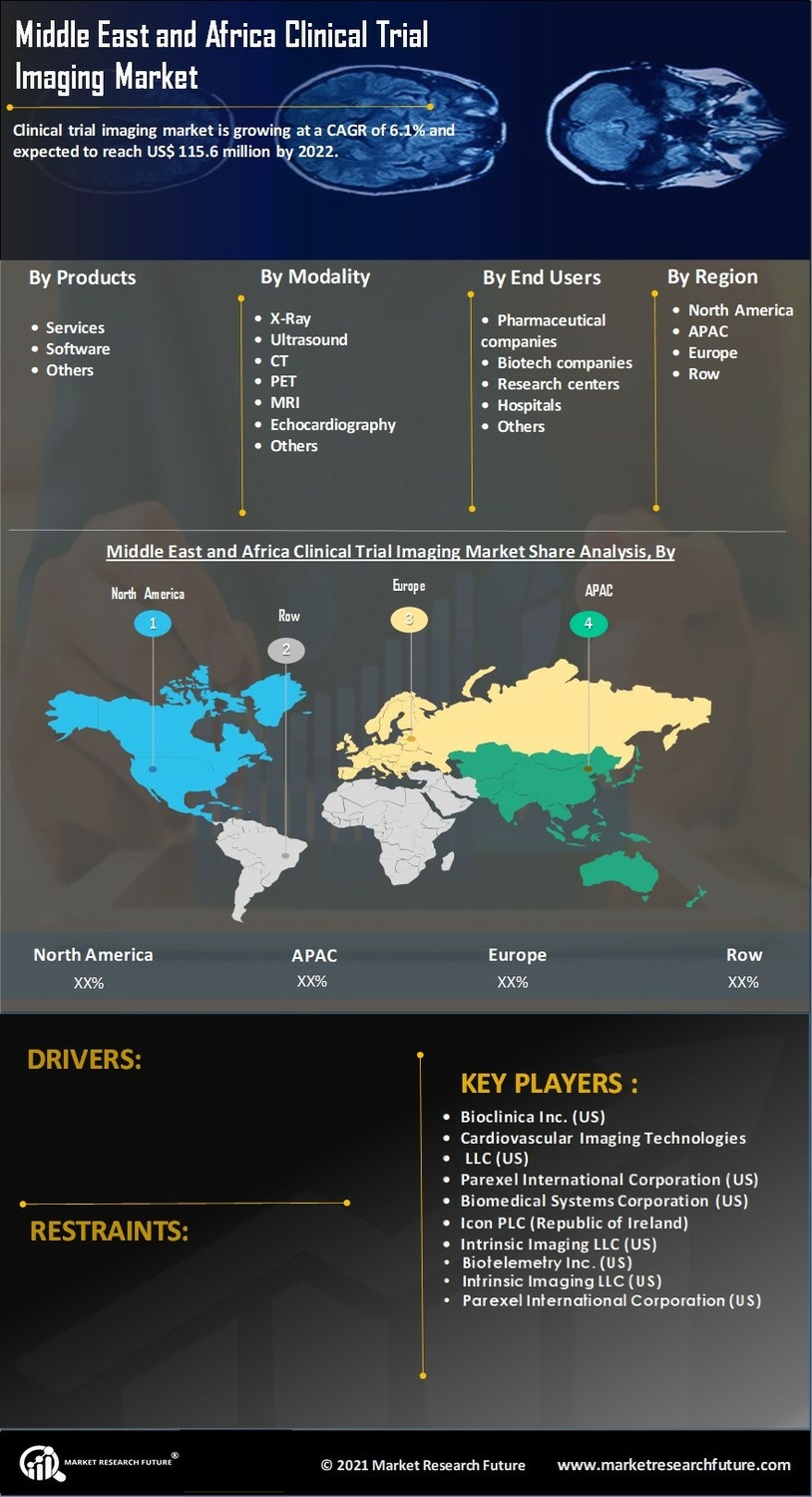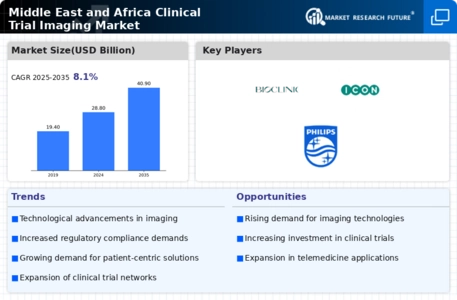Regulatory Changes and Streamlining
Regulatory changes are playing a crucial role in shaping the Middle East and Africa Clinical Trial Imaging Market. Governments in the region are increasingly recognizing the importance of clinical trials in advancing healthcare. Consequently, there has been a concerted effort to streamline regulatory processes, making it easier for companies to conduct trials. For example, the introduction of expedited review processes and clearer guidelines for imaging protocols has reduced the time required for approvals. This regulatory environment fosters innovation and encourages investment in clinical trial imaging technologies. Furthermore, the harmonization of regulations across countries in the region is likely to enhance collaboration among stakeholders, thereby accelerating the pace of clinical research. As a result, the market is expected to witness a surge in activity, driven by these favorable regulatory conditions.
Technological Advancements in Imaging
The Middle East and Africa Clinical Trial Imaging Market is experiencing a transformative phase due to rapid technological advancements. Innovations such as artificial intelligence and machine learning are enhancing imaging techniques, leading to improved accuracy and efficiency in clinical trials. For instance, advanced imaging modalities like PET-CT and MRI are becoming more prevalent, allowing for better patient monitoring and data collection. The integration of cloud-based imaging solutions is also facilitating real-time data sharing among researchers and clinicians, which is crucial for timely decision-making. As a result, the market is projected to grow significantly, with estimates suggesting a compound annual growth rate of over 10% in the coming years. This technological evolution not only streamlines processes but also enhances the overall quality of clinical trials, making it a pivotal driver in the industry.
Rising Demand for Personalized Medicine
The Middle East and Africa Clinical Trial Imaging Market is increasingly influenced by the rising demand for personalized medicine. As healthcare shifts towards tailored treatment plans, the need for precise imaging techniques becomes paramount. Imaging plays a critical role in identifying patient-specific characteristics, which are essential for developing personalized therapies. The integration of advanced imaging technologies, such as genomic imaging, is enabling researchers to better understand disease mechanisms and treatment responses. This trend is expected to drive investment in clinical trial imaging, as pharmaceutical companies seek to validate their personalized medicine approaches through robust imaging data. Moreover, the growing prevalence of chronic diseases in the region further underscores the necessity for personalized treatment strategies, thereby propelling the market forward.
Expansion of Clinical Research Infrastructure
The Middle East and Africa Clinical Trial Imaging Market is benefiting from the expansion of clinical research infrastructure across the region. Governments and private entities are investing in state-of-the-art facilities and technologies to support clinical trials. This expansion includes the establishment of dedicated imaging centers equipped with advanced technologies, which enhances the capacity for conducting high-quality trials. Furthermore, partnerships between academic institutions and industry players are fostering innovation and knowledge transfer, thereby strengthening the research ecosystem. As a result, the availability of robust clinical research infrastructure is likely to attract more international sponsors to the region, increasing the volume of clinical trials conducted. This growth in infrastructure not only supports the imaging market but also contributes to the overall advancement of healthcare in the Middle East and Africa.
Increased Focus on Patient-Centric Approaches
The Middle East and Africa Clinical Trial Imaging Market is witnessing a paradigm shift towards patient-centric approaches. This trend emphasizes the importance of patient engagement and satisfaction in clinical trials. As stakeholders increasingly prioritize the patient experience, imaging protocols are being designed to minimize discomfort and enhance convenience. For instance, the use of non-invasive imaging techniques is on the rise, allowing for better patient compliance and retention. Additionally, the incorporation of patient feedback into trial designs is becoming more common, ensuring that imaging procedures align with patient needs. This focus on patient-centricity not only improves trial outcomes but also enhances the overall reputation of clinical research in the region. Consequently, this driver is likely to contribute to the growth of the market as more organizations adopt these approaches.


















Leave a Comment